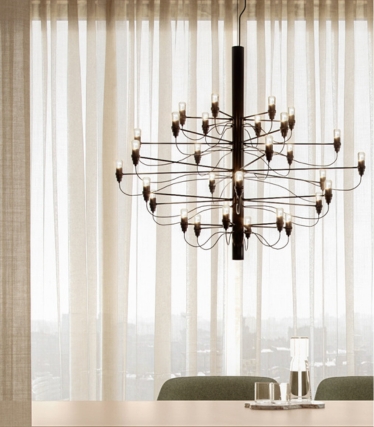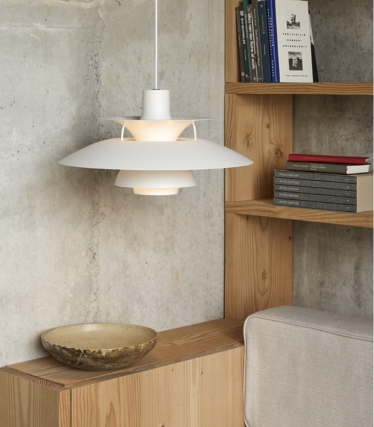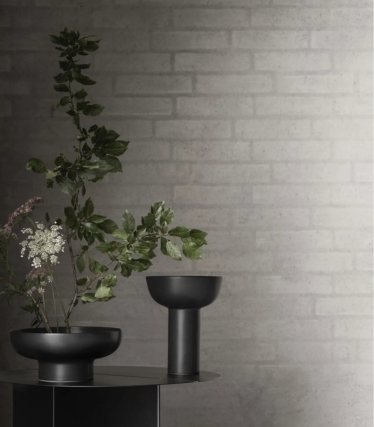KNOWLEDGE ABOUT LIGHT BULBS
Learn more about the world of light sources!
Navigating the vast selection of light bulbs can be confusing. Which bulb to choose? What is the light like and where is it best to use what? We'll try to outline it for you here, so it will be a little easier to navigate.
Here's what you need to be aware of:
The socket: Before you even start thinking about colour temperature and CRI values, you should research exactly which socket you need! Look for both the socket type and dimensions to make sure the bulb fits your particular lamp.
Dimmability: If the lamp needs to be dimmable in some way, make sure that the bulb you buy is dimmable - after the whole world switched to LED, this is not a given! Read more about damping here!
Colour rendering: This means how good the bulb is at reproducing colours as they appear in nature in natural light! Choose a bulb with good colour rendering - i.e. a CRI of at least 90 - in places where colour rendering is particularly important.
The colour of light: Light is not just light! Assess what type of light you are looking for:
- 2\,700-3,300 Kelvin is a warm light similar to that of an incandescent bulb.
- 3\,300-4,000 Kelvin gives a neutral light.
- 4\,000 Kelvin gives a cool light.
As a rule of thumb, a Kelvin of 2,500-2,700 is the best light to relax in, a Kelvin of 4,000-4,500 is the most optimal to work in, and a Kelvin of 6,000 or above is good for winter depression or if you need some extra energy.
3-step dimming - flexible dimming without dimmer
A 3-step dimmable bulb allows you to switch between three preset brightness levels - without having to install an external dimmer. It works by simply pressing the regular switch once, twice or three times and the bulb switches itself between high, medium and low brightness. This type of bulb is ideal if you want mood lighting in an easy way - and especially smart in lamps where dimming via wall switch is not an option.
Dim to Warm - cosy light when you dim
Dim to Warm technology means that the light automatically becomes warmer in colour tone when you dim it. It's very similar to how an old-fashioned incandescent bulb became more golden when the light was turned down. It provides an extra cosy and comfortable atmosphere, especially in the living room, bedroom or at the dinner table. When the light is on full power, it has a neutral or warm white hue - and when you dim it, the light becomes more golden and soft. It's perfect for those who want to combine functional light with ambience.
Smart bulbs - when light follows you
Smart bulbs such as Philips Hue or Nordlux Smart give you full control over colour, brightness and on/off times - directly from an app, voice control or remote control. You can set fixed routines that dim the lights in the evening and wake you up in the morning with gradual illumination. Some models even offer millions of colours and different scenarios - depending on your mood and needs. Smart bulbs come in many socket types, including E27, E14 and GU10, and fit in most standard lamps.
The different sockets on the bulbs
There are many different sockets for light bulbs, but the most common are:
E27 (large base) E14 (small socket) G9 (pin bulb) GU10 (spot bulb)
:format(jpeg))
LED
LED is the standard in light bulbs today. The small, hugely efficient and bright bulb has slowly taken over the lighting market with its long life and power-saving nature. Many may remember the days of incandescent bulbs followed by the energy-saving bulb era - but the fact is that today we are in the LED golden age! If you need an LED, there are several things you need to keep an eye on.
Lumen
Lumen (lm) is equal to the brightness a light source emits. You can roughly count on the following:
- 2-4W = 200-300 lumens
- 3-5W = 300-500 lumens
- 5-7W = 500-700 lumens
- 8-10W = 700-1000 lumens
- 10-13W = 1000-1250 lumens
- 13-20W = 1250-2000 lumens
The wonderful LED invention
The first real LED lamp was invented in the early 1960s at General Electric's development department by Nick Holonyak Jr. - and it was a small red diode, similar to the one you probably have on your TV, that reminds you that it's on standby.
The invention was a further development of the infrared LED invented by Gary Pittman and Robert Biard the previous year at Texas Instruments, and like its predecessor, the tiny diodes had a long way to go before they had a real purpose.
Throughout the sixties and seventies, more colours and LED shades were invented and at the same time the small light emitters became more and more efficient - however, it was the classic energy-saving bulb, which is actually a fluorescent tube, that won the arms race to become the savings bulb when people were desperate to save energy during the 1973 oil crisis.
The energy-saving light bulb was a small obstacle to the development of commercial LED bulbs - but even though the development was not as fast as it had been, it continued just as quietly in LED lighting - and in 1994, the ultra-bright blue LED was invented, which made LED displays possible and indirectly meant that it was finally possible to produce an LED bulb that lit as well as a classic incandescent bulb.
CRI stands for Colour Rendering Index and describes how well a bulb renders light. LEDs had long been plagued by poor colour rendering - and powerful blue LEDs could solve that problem. If the blue light is emitted through a bulb that is internally coated with yellow phosphor, a white light is created - phosphor gets its name from the Greek word for light bringer.
The next several years were spent perfecting the white LED - and innovation really took off after the US Department of Energy realised how much power LED bulbs could potentially save.
The great LED benefits
Today, it's possible to get LED lights that rival even some of the best incandescent bulbs - and with the right LED, you can gain many advantages over old-fashioned bulbs. Nowadays, there are even LED lights that look just like candles Here are six reasons why you should invest in an LED arsenal of bulbs and lamps:
- 1. Lower power consumption The first point may go without saying, but it's worth mentioning that LEDs use significantly less power than incandescent, energy-saving and halogen bulbs. It's hard to give specific figures, as all LED bulbs are different, just like incandescent bulbs - but a rule of thumb is that a 60 watt incandescent bulb can be replaced by an 8 watt LED.
- 2. Lower heat emission We've probably all tried to change a recently blown bulb and burnt our fingers in the process. The reason why LED bulbs use less power is that an LED more efficiently converts energy into light - an incandescent bulb loses a huge amount of energy to heat. This means that your LED lamp both uses less power and your LED lamp gets less hot. That way you don't have to worry about lampshades discolouring from heat - and that way lamp manufacturers can make even more exciting lamps.
- 3. High and fast colour reproduction Those of us who lived during the energy-saving bulb era probably remember the dull light provided by those small, twisted, compact fluorescent tubes. To avoid looking like a railway station toilet, the living room lights had to be switched on long before guests arrived, and it could take a long time before the energy-saving bulbs no longer discoloured both the decor and the guests - not to mention the health hazard of accidentally dropping one of the small bulbs containing mercury vapour. With an LED bulb, you give your surroundings the light they deserve from the second you switch on the light switch. LED doesn't have a warm-up period as such, and a bulb with a high CRI value is beautiful from the start of the party to the end.
- 4. Long lifespan In the old days, going to the grocery store because a light bulb had popped off was a regular part of everyday life - that's no longer the case. LED bulbs have tens of thousands of hours of life - and some manufacturers promise up to 100,000 hours of life.
- 5. Smaller form factor Today, tiny LED lights can be produced, allowing lamp manufacturers to create shapes that were previously impossible to create. The long lifetime also means lamp manufacturers don't have to worry about replacement bulbs being readily available - which means they can make uniquely shaped bulbs. That's why today there are many more unique lamps that break away from classic lamp shapes.
- 5. LED bulbs are the only light bulbs readily available today In 2009 the phase-out of 100 watt incandescent bulbs began, in 2012 all remaining incandescent bulbs, in 2018 halogen bulbs and in 2021 energy saving bulbs. We are truly in the golden age of LED bulbs - and the small, uncompromising power-saving light emitters really seem to be the best bulbs around. Every year, the colour rendering, light and power consumption of LED bulbs becomes more and more efficient, and there are no signs of this trend stopping.
Colour reproduction
Be aware that light that is too white and cold can cause discomfort - and light that is too yellow gives an unnatural colour rendering. The light's ability to reproduce colours is rated on a scale from 0-100 CRI. It stands for Colour Rendering Index. As a yardstick, the ability of daylight to reproduce colours is 100 CRI.
The LED world has come a long way in the last few years - where it used to be said that halogen and incandescent bulbs outperformed LED light, it is now said that LED bulbs can have just as good colour rendering as the classic bulbs had before they became illegal.
The light of the future
Philips has partnered with Apple to develop Philips Hue, bulbs and lamps that you can code to do exactly what you want.\ It will definitely be the light of the future.
Simply download the app and you'll be able to set the brightness and colour (you can choose from 16 million colours), and you can code the light to turn on at specific times, dim down at night and dim up in the morning.\ You can use it as an anti-theft device when travelling as you can make it turn on and off randomly around the house.\ There are countless possibilities for what you can now make your light do.
Philips Hue is available in E27, E14, GU10 and both normal and deco bulbs - as well as built-in LEDs in Hue's own lamps.
See all Philips Hue products here!






